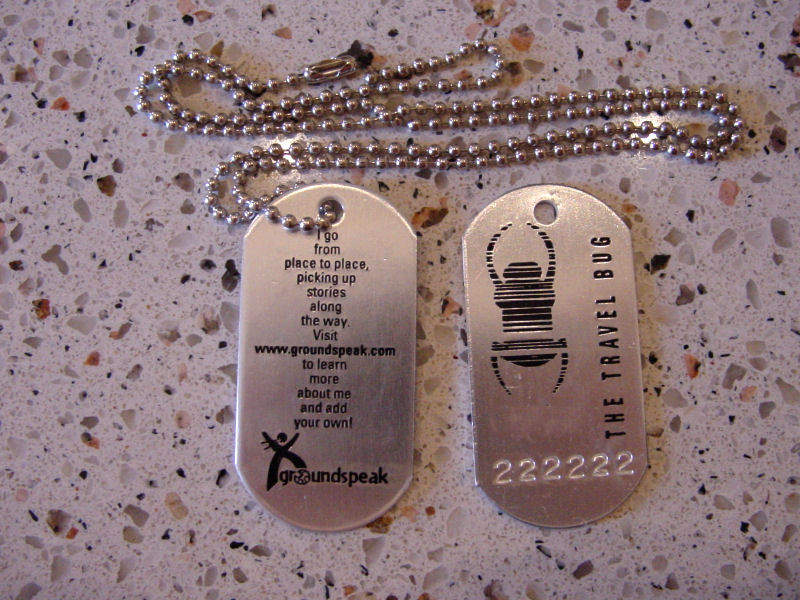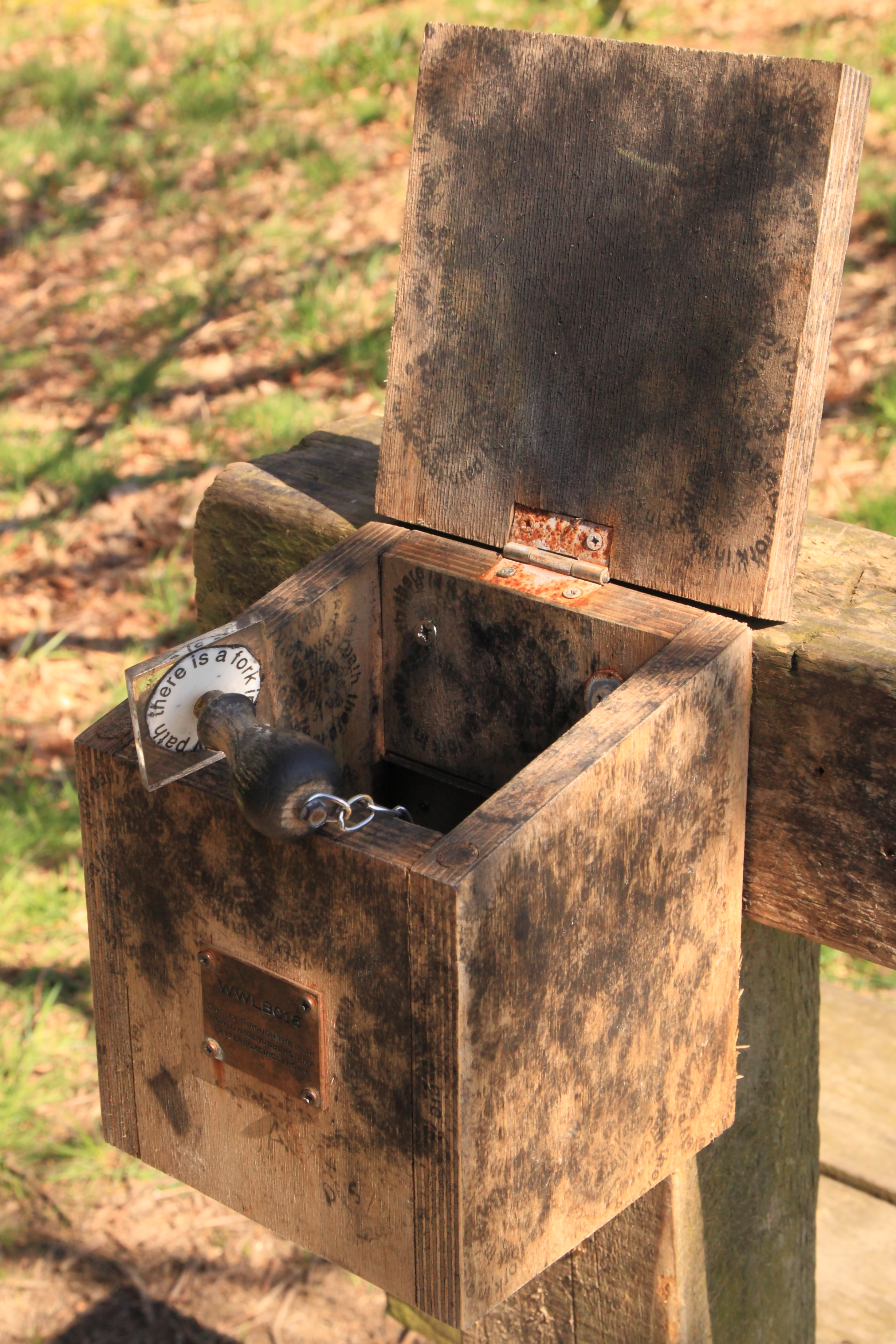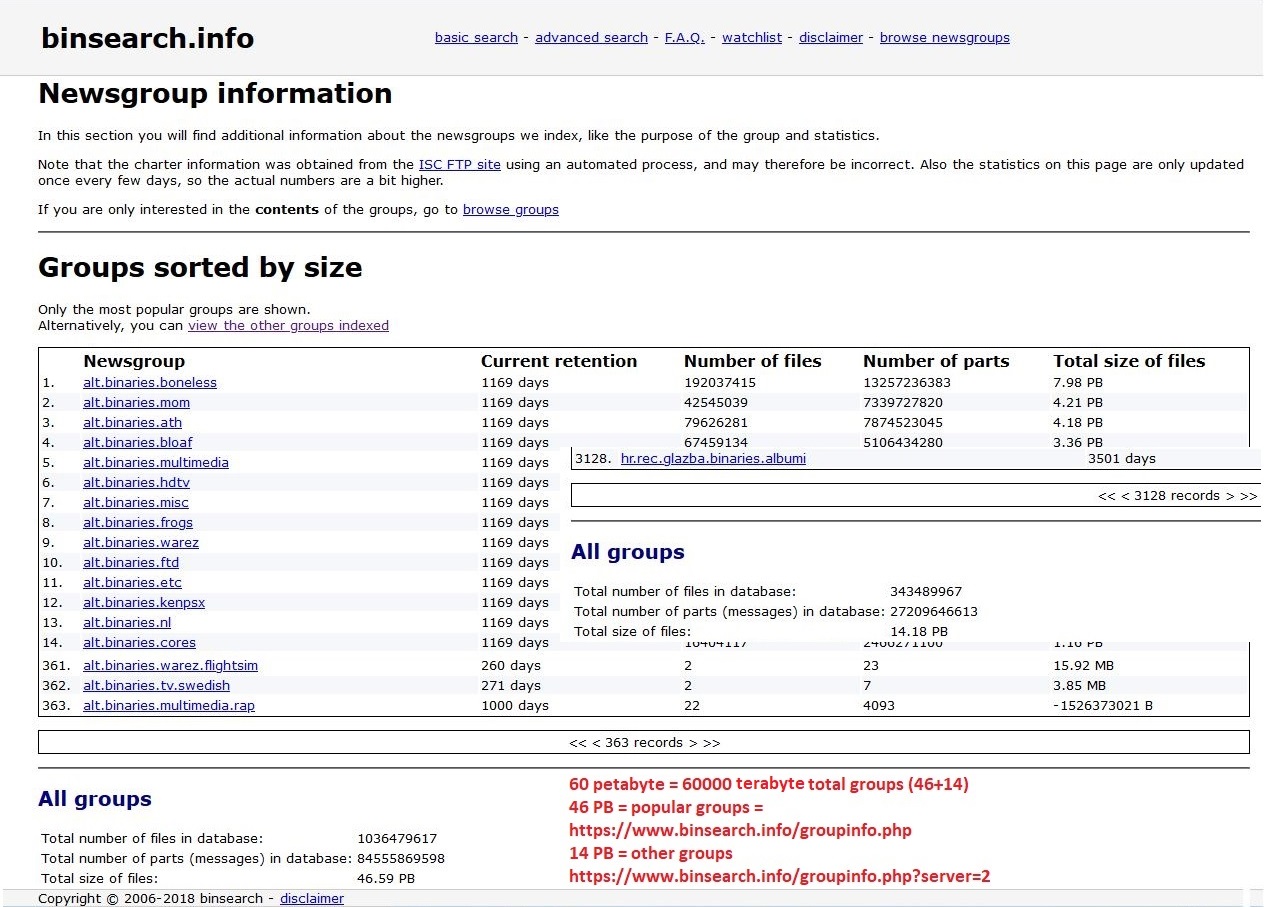|
Geocaching
Geocaching is an outdoor recreational activity, in which participants use a Global Positioning System (GPS) receiver or mobile device and other navigational techniques to hide and seek containers, called "geocaches" or "caches", at specific locations marked by coordinates all over the world. As of 2021 there were over a million active players in the United States. Geocaching can be considered a Location-based game. A typical cache is a small waterproof container containing a logbook and sometimes a pen or pencil. The geocacher signs the log with their established code name and dates it, in order to prove that they found the cache. After signing the log, the cache must be placed back exactly where the person found it. Larger containers such as plastic storage containers (Tupperware or similar) or ammo boxes can also contain items for trading, such as toys or trinkets, usually of more sentimental worth than financial. Geocaching shares many aspects with benchmarking, trigp ... [...More Info...] [...Related Items...] OR: [Wikipedia] [Google] [Baidu] |
Trackable
A Travel Bug is a registered trademark of Groundspeak, Inc. used to describe a dog tag used in Geocaching. It is moved from cache to cache, with a unique tracking number allowing its movements to be tracked through their geocaching website. Some tags are fastened to an object, known as a hitchhiker, before they are released into a cache. Travel bugs have also been used as advertising to promote Jeep or to increase diabetes awareness. A free service known as Geokrety is also available but this is not affliated to Groundspeak. Description A travel bug is an item which is trackable which looks similar to a dog tag. The tag is stamped with a tracking number and the Geocaching.com website address. A travel bug can be attached to another item by use of the chain on the travel bug if required, examples of such items include teddy bears, toy cars, or golf balls. Marsh (2011): p. 87 These attached items are called "hitchhikers". During the registration of the bug on the website, the o ... [...More Info...] [...Related Items...] OR: [Wikipedia] [Google] [Baidu] |
Benchmarking (hobby)
Benchmarking, also known as benchmark hunting, is a hobby activity in which participants find benchmarks (also known as survey markers or geodetic control points). The term "bench mark" is used only to refer to survey markers that designate a certain elevation, but hobbyists often use the term benchmarks to include triangulation stations or other reference marks. They typically then log their finds online. Like geocaching, the activity has become popular since 1995, propelled by the availability of on-line data on the location of survey marks (with directions for finding them) and by the rise of hobbyist-oriented websites. History Many survey markers in the U.S. were set over 100 years ago. There was a surge in creating these marks in the U.S. from about 1930 to 1955, in conjunction with the expansion of map-making activities across the country. Sources of data on U.S. marks In the U.S., about 740,000 benchmarks with the most precise elevations or coordinates (but only a smal ... [...More Info...] [...Related Items...] OR: [Wikipedia] [Google] [Baidu] |
Trigpointing
Benchmarking, also known as benchmark hunting, is a hobby activity in which participants find benchmarks (also known as survey markers or geodetic control points). The term "bench mark" is used only to refer to survey markers that designate a certain elevation, but hobbyists often use the term benchmarks to include triangulation stations or other reference marks. They typically then log their finds online. Like geocaching, the activity has become popular since 1995, propelled by the availability of on-line data on the location of survey marks (with directions for finding them) and by the rise of hobbyist-oriented websites. History Many survey markers in the U.S. were set over 100 years ago. There was a surge in creating these marks in the U.S. from about 1930 to 1955, in conjunction with the expansion of map-making activities across the country. Sources of data on U.S. marks In the U.S., about 740,000 benchmarks with the most precise elevations or coordinates (but only a smal ... [...More Info...] [...Related Items...] OR: [Wikipedia] [Google] [Baidu] |
Beavercreek, Oregon
Beavercreek is an unincorporated hamlet and census-designated place in Clackamas County, Oregon, United States, located southeast of Oregon City. The population was 4,485 at the 2010 census. Demographics History According to ''Oregon Geographic Names'', the name "Beaver Creek" was first used for a school district in this area in the early 1850s. It was named for the creek that flows through the community and into the Willamette River. A post office operated under various names in the locality until 1922, when the name was changed to Beavercreek, the form still used today. Beavercreek's ZIP code is 97004. In the summer of 2006, the citizens of Beavercreek voted to become Oregon's first hamlet, a system of quasi-government which exists in Clackamas County, Oregon. A final hearing by the board of county commissioners on the formation of the hamlet took place in September 2006, and officially recognized the community as The Hamlet of Beavercreek. The hamlet holds monthly community ... [...More Info...] [...Related Items...] OR: [Wikipedia] [Google] [Baidu] |
Munzee
Munzee is a freemium scavenger hunt game where QR codes have to be found at different places in the real world. The game is similar to geocaching but uses QR code technology, in addition to device GPS location, to prove the find instead of a logbook. Launched in McKinney, Texas in 2011, the game caught on first in Germany, along with California and Michigan. It is now played in more than 188 countries around the world, and there is at least one physical Munzee deployed on every continent, including Antarctica. The QR codes are placed by players at places of interest and are often printed on weatherproof stickers. Previously, the places could also be marked by a NFC tag, however this functionality was removed in 2018. These stickers are called Munzees. Both the finding and the hiding players receive points for deploying and finding Munzees. The QR codes on the Munzees are read by means of a smartphone app for iOS or Android. The coordinates of the Munzees as well as the data of ... [...More Info...] [...Related Items...] OR: [Wikipedia] [Google] [Baidu] |
Letterboxing (hobby)
Letterboxing is an outdoor hobby that combines elements of orienteering, art, and puzzle solving. Letterboxers hide small, weatherproof boxes in publicly accessible places (like parks) and distribute clues to finding the box in printed catalogs, on one of several web sites, or by word of mouth. Individual letterboxes contain a notebook and a rubber stamp, preferably hand carved or custom made. Finders make an imprint of the letterbox's stamp in their personal notebook, and leave an impression of their personal signature stamp on the letterbox's "visitors' book" or "logbook" — as proof of having found the box and letting other letterboxers know who has visited. Many letterboxers keep careful track of their "find count". History The origin of letterboxing can be traced to Dartmoor, Devon, England in 1854. William Crossing in his ''Guide to Dartmoor'' states that a well known Dartmoor guide (James Perrott) placed a bottle for visiting cards at Cranmere Pool on the northern moor i ... [...More Info...] [...Related Items...] OR: [Wikipedia] [Google] [Baidu] |
Ammunition Box
An ammunition box or cartridge box is a container designed for safe transport and storage of ammunition. It is typically made of metal and labelled with caliber, quantity, and manufacturing date or lot number. A rubber gasket is commonly found in the hinged lid to protect the ammunition from moisture damage. The resealing ammunition box is largely a NATO tradition. Warsaw Pact nations typically stored and transported ammunition in single-use "spam cans". They had crates that had a sealed zinc lining on the inside. Commercial ammunition boxes Not all ammunition boxes are metal. Wood and corrugated fiberboard have also historically been used as a method of packaging and storing ammunition. Some enthusiasts and investors collect historical ammunition boxes. Storage Due to their durable construction, used metal ammunition boxes are popularly re-used for general storage and other purposes. They are a popular choice for geocaching containers. Used ammunition boxes have lead and ... [...More Info...] [...Related Items...] OR: [Wikipedia] [Google] [Baidu] |
Newsgroup
A Usenet newsgroup is a repository usually within the Usenet system, for messages posted from users in different locations using the Internet. They are discussion groups and are not devoted to publishing news. Newsgroups are technically distinct from, but functionally similar to, discussion forums on the World Wide Web. Newsreader software is used to read the content of newsgroups. Before the adoption of the World Wide Web, Usenet newsgroups were among the most popular Internet services, and have retained their noncommercial nature in contrast to the increasingly ad-laden web. In recent years, this form of open discussion on the Internet has lost considerable ground to individually-operated browser-accessible forums and big media social networks such as Facebook and Twitter. Communication is facilitated by the Network News Transfer Protocol (NNTP) which allows connection to Usenet servers and data transfer over the internet. Similar to another early (yet still used) protocol ... [...More Info...] [...Related Items...] OR: [Wikipedia] [Google] [Baidu] |
Usenet
Usenet () is a worldwide distributed discussion system available on computers. It was developed from the general-purpose Unix-to-Unix Copy (UUCP) dial-up network architecture. Tom Truscott and Jim Ellis conceived the idea in 1979, and it was established in 1980.''From Usenet to CoWebs: interacting with social information spaces'', Christopher Lueg, Danyel Fisher, Springer (2003), , Users read and post messages (called ''articles'' or ''posts'', and collectively termed ''news'') to one or more topic categories, known as newsgroups. Usenet resembles a bulletin board system (BBS) in many respects and is the precursor to the Internet forums that have become widely used. Discussions are threaded, as with web forums and BBSs, though posts are stored on the server sequentially.The jargon file v4.4.7 , Jargon File Archive. [...More Info...] [...Related Items...] OR: [Wikipedia] [Google] [Baidu] |
Landmark
A landmark is a recognizable natural or artificial feature used for navigation, a feature that stands out from its near environment and is often visible from long distances. In modern use, the term can also be applied to smaller structures or features, that have become local or national symbols. Etymology In old English the word ''landmearc'' (from ''land'' + ''mearc'' (mark)) was used to describe a boundary marker, an "object set up to mark the boundaries of a kingdom, estate, etc.". Starting from approx. 1560, this understanding of landmark was replaced by a more general one. A landmark became a "conspicuous object in a landscape". A ''landmark'' literally meant a geographic feature used by explorers and others to find their way back or through an area. For example, the Table Mountain near Cape Town, South Africa is used as the landmark to help sailors to navigate around southern tip of Africa during the Age of Exploration. Artificial structures are also sometimes built to a ... [...More Info...] [...Related Items...] OR: [Wikipedia] [Google] [Baidu] |
Blue Switch Day
Blue is one of the three primary colours in the RYB colour model (traditional colour theory), as well as in the RGB (additive) colour model. It lies between violet and cyan on the spectrum of visible light. The eye perceives blue when observing light with a dominant wavelength between approximately 450 and 495 nanometres. Most blues contain a slight mixture of other colours; azure contains some green, while ultramarine contains some violet. The clear daytime sky and the deep sea appear blue because of an optical effect known as Rayleigh scattering. An optical effect called Tyndall effect explains blue eyes. Distant objects appear more blue because of another optical effect called aerial perspective. Blue has been an important colour in art and decoration since ancient times. The semi-precious stone lapis lazuli was used in ancient Egypt for jewellery and ornament and later, in the Renaissance, to make the pigment ultramarine, the most expensive of all pigments. In the ... [...More Info...] [...Related Items...] OR: [Wikipedia] [Google] [Baidu] |
BBC News
BBC News is an operational business division of the British Broadcasting Corporation (BBC) responsible for the gathering and broadcasting of news and current affairs in the UK and around the world. The department is the world's largest broadcast news organisation and generates about 120 hours of radio and television output each day, as well as online news coverage. The service maintains 50 foreign news bureaus with more than 250 correspondents around the world. Deborah Turness has been the CEO of news and current affairs since September 2022. In 2019, it was reported in an Ofcom report that the BBC spent £136m on news during the period April 2018 to March 2019. BBC News' domestic, global and online news divisions are housed within the largest live newsroom in Europe, in Broadcasting House in central London. Parliamentary coverage is produced and broadcast from studios in London. Through BBC English Regions, the BBC also has regional centres across England and national news c ... [...More Info...] [...Related Items...] OR: [Wikipedia] [Google] [Baidu] |




.jpg)


